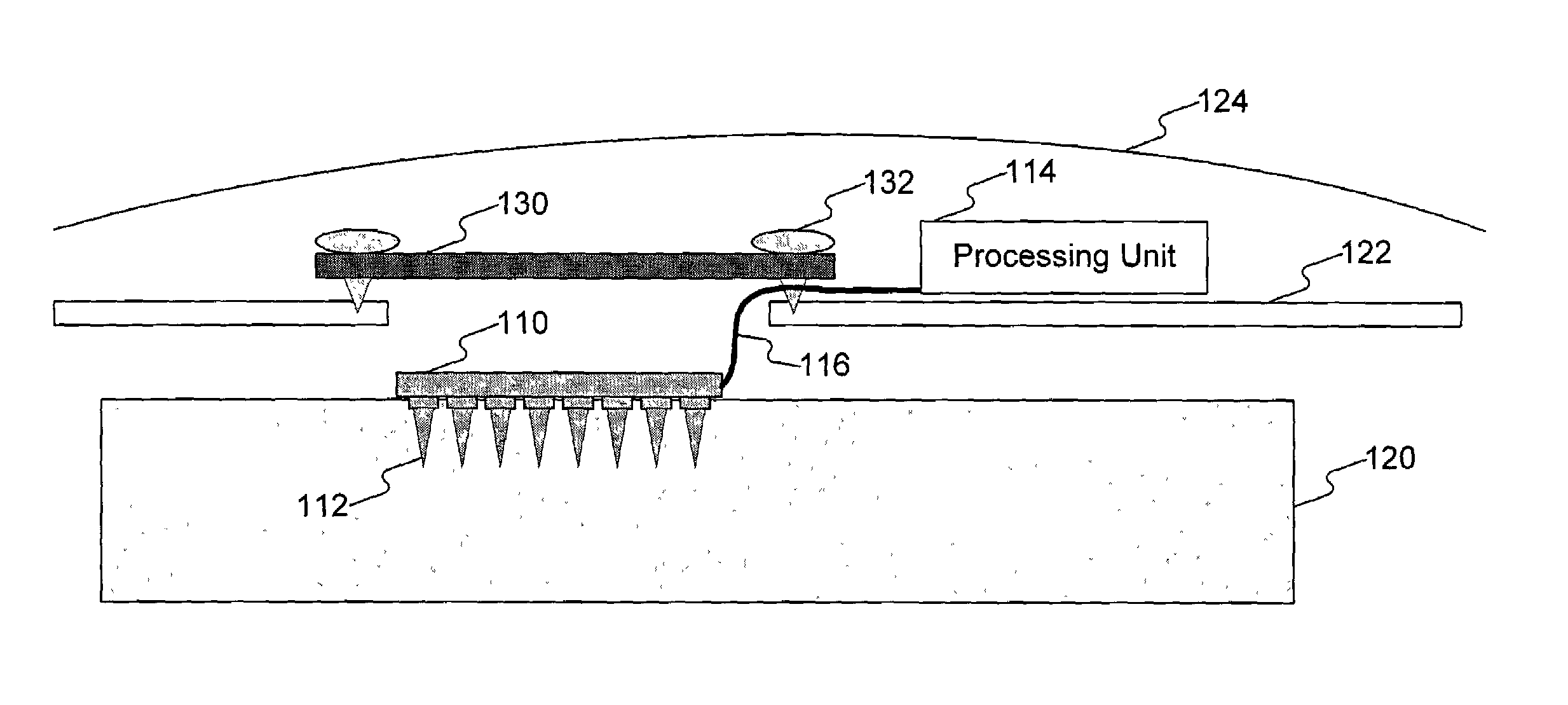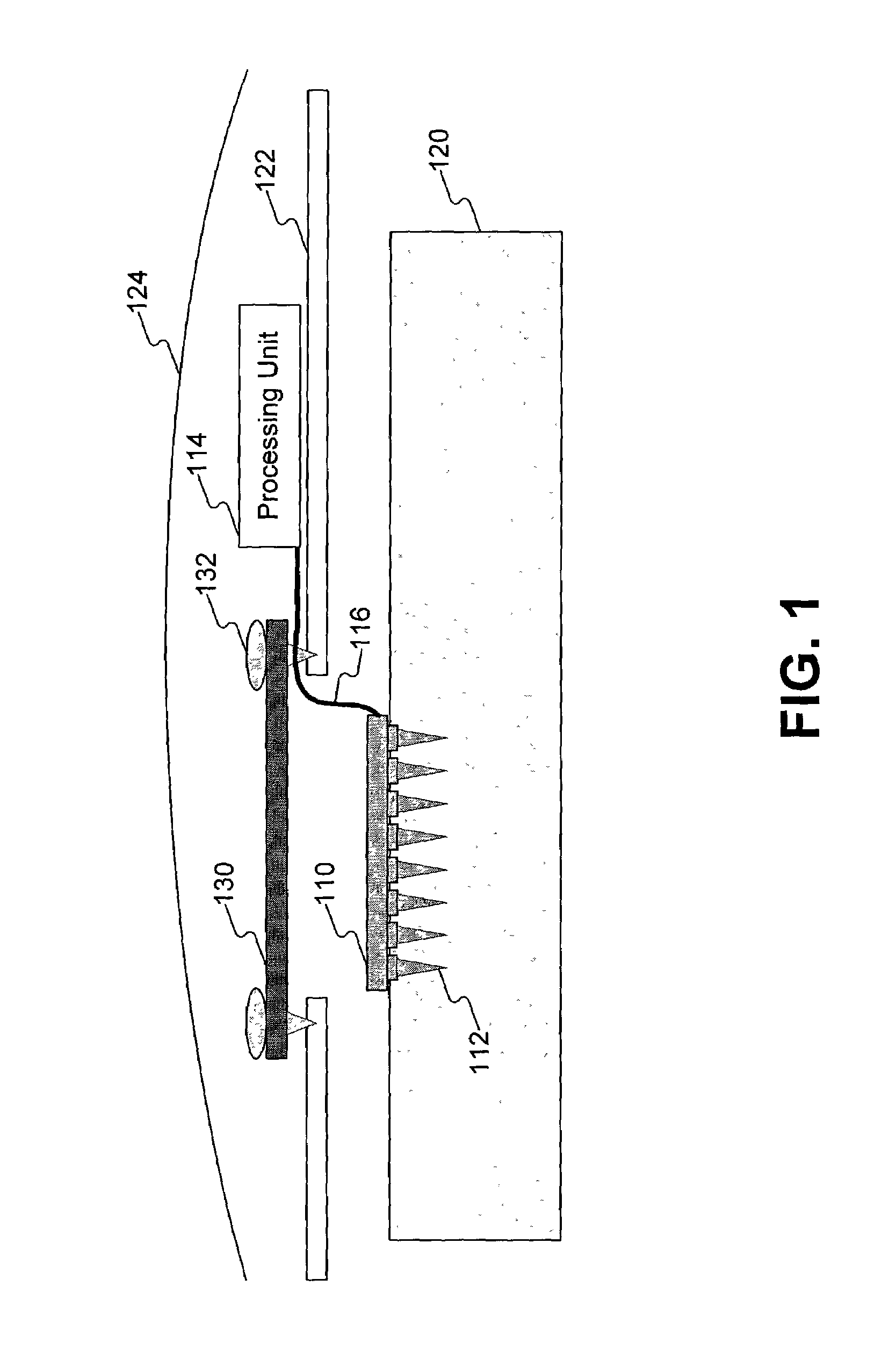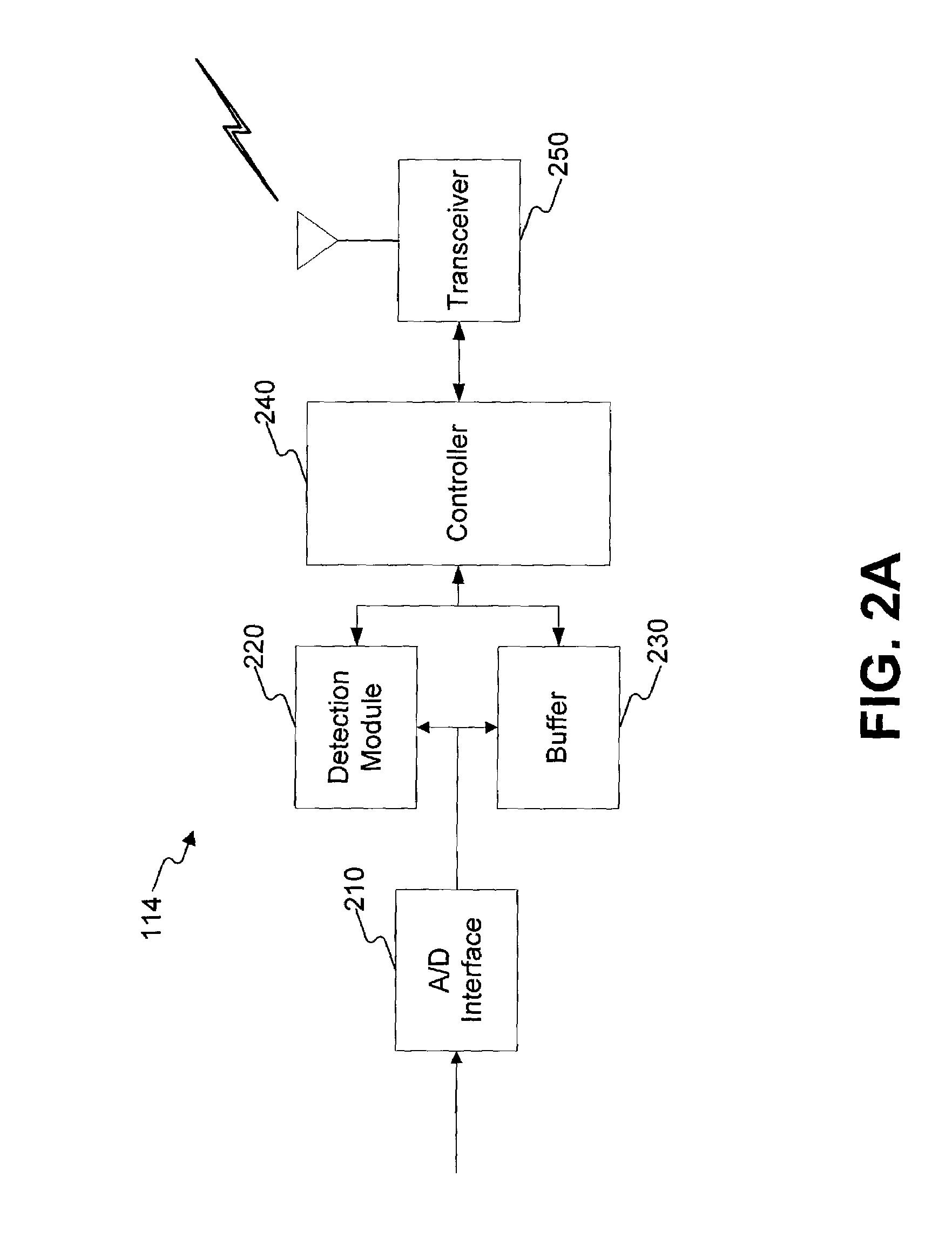Microstructured arrays for cortex interaction and related methods of manufacture and use
a microstructured array and cortex technology, applied in bioelectric signal measurement, medical science, diagnostics, etc., can solve the problems of limiting the useful life of these systems, not offering the spatial resolution needed for prosthetic control, and the cables themselves
- Summary
- Abstract
- Description
- Claims
- Application Information
AI Technical Summary
Benefits of technology
Problems solved by technology
Method used
Image
Examples
Embodiment Construction
[0021]Reference will now be made in detail to the present embodiments of the invention, examples of which are illustrated in the accompanying drawings. Wherever possible, the same reference numbers will be used throughout the drawings to refer to the same or like parts.
[0022]FIG. 1 generally illustrates a brain implant system consistent with an embodiment of the present invention. As shown in FIG. 1, the system includes an electrode array 110 inserted into a patient's cerebral cortex 120 through an opening in the skull 122. Array 110 may include a plurality of electrodes 112 for detecting electrical brain signals or impulses. While FIG. 1 shows array 110 inserted into cerebral cortex 120, array 110 may be placed in any location of a patient's brain allowing for array 110 to detect electrical brain signals or impulses.
[0023]Each electrode 112 may be connected to a processing unit 114 via wiring 116. Processing unit 114 may be secured to skull 122 by, for example, the use of an adhesi...
PUM
| Property | Measurement | Unit |
|---|---|---|
| Length | aaaaa | aaaaa |
| Flexibility | aaaaa | aaaaa |
| Width | aaaaa | aaaaa |
Abstract
Description
Claims
Application Information
 Login to View More
Login to View More - Generate Ideas
- Intellectual Property
- Life Sciences
- Materials
- Tech Scout
- Unparalleled Data Quality
- Higher Quality Content
- 60% Fewer Hallucinations
Browse by: Latest US Patents, China's latest patents, Technical Efficacy Thesaurus, Application Domain, Technology Topic, Popular Technical Reports.
© 2025 PatSnap. All rights reserved.Legal|Privacy policy|Modern Slavery Act Transparency Statement|Sitemap|About US| Contact US: help@patsnap.com



